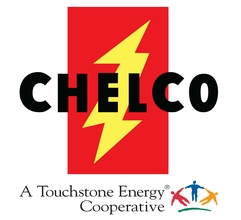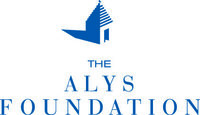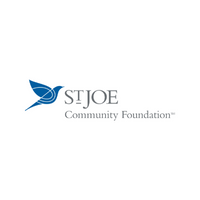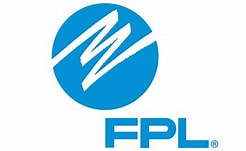Hands-on Anatomical Models

- School:
- Paxton School
- Subject:
- STEM Education
- Teacher:
- Brande Manning
- Students Impacted:
- 103
- Grade:
- 9-12
- Date:
- October 4, 2017
Investor
Thank you to the following investor for funding this grant.
CHELCO - $1,000.00
Original Grant Overview
Goal
The goal of this project is to give students hands-on experience with anatomical models for study in Biology and Anatomy and Physiology. Currently, 0% of Biology students have adequate knowledge of the human body in order to pass the state Biology EOC exam. 0% of Anatomy and Physiology students were able to pass a pre-assessment that assesses the standards as outlined on the state of Florida course description. Hands-on experience with models will provide students with opportunities to improve their comprehension of anatomy through visual and tactile learning. These models will last many years and provide opportunities for hundreds of students.
Benchmarks that will be addressed through the use of these models include:
SC.912.L.14.16: Describe the anatomy and histology, including ultrastructure, of muscle tissue.
After students have experienced this course using a variety of teaching methods, including the use of the purchased models, it is expected that at least 70% of biology and anatomy students will pass an assessment of the above standards at the end of the school year.
SC.912.L.14.26 Identify the major parts of the brain on diagrams or models.
SC.912.L.14.27: Identify the functions of the major parts of the brain, including the meninges, medulla, pons, midbrain, hypothalamus, thalamus, cerebellum and cerebrum.
SC.912.L.14.36: Describe the factors affecting blood flow through the cardiovascular system.
SC.912.L.14.38: Describe normal heart sounds and what they mean.
SC.912.L.14.40: Describe the histology of the major arteries and veins of systemic, pulmonary, hepatic portal, and coronary circulation.
SC.912.L.14.50: Describe the structure of vertebrate sensory organs. Relate structure to function in vertebrate sensory systems.
What will be done with my students
36 anatomy students and 67 biology students will actively engage with these models to learn the location and function of vital structures in the human body. Students will relate structure to function and identify parts of whole organs as required in the state science standards. Students will also engage with the models to describe how whole systems work, describe how malfunction of organs can lead to disease or disorder, and identify structures involved in specific clinical situations. Use of these models will combine with lecture, virtual images, histological study, and dissections to give students an opportunity to learn content in a variety of instructional techniques.
The described activities will take place at various times in conjunction with the teaching of the related units. Anatomy students will use the muscle and brain models during the first semester. The Eye and heart model will be used second semester. Biology students will use the brain model second semester.
Future biology and anatomy students will also benefit from this purchase. These models will last many years (at least a decade) if well cared for. Hundreds and hundreds of students could potentially benefit from this purchase.
Benefits to my students
Anatomical models offer a 3-D experience with organs that cannot be achieved through text, picture, or virtual dissection. Students will develop a firmer understanding of state standards through hands-on learning. These skill will be useful to any student entering the medical or veterinary field after high school. Durable models also offer a more efficient means of studying structure when compared to dissection. Anatomical models will be used for many years in this science classroom.
These models will be used with 2 teachers and 103 students. Both teachers will evaluate this project in two ways:
1. Student performance assessment on the benchmarks being addressed with this project.
2. Student survey that assesses how the students valued the use of the models.
Budget Narrative
I would like to purchase a total of 4 models for students.
1. Skeletal Muscle Model ($254.95)-this model displays the microscopic structure of a muscle filament. It will be very useful in understanding the mechanism by which skeletal muscle contracts as well as identifying all structures within a muscle filament.
2. Brain Model ($260.00)-this model will serve both the biology and anatomy students. Students will be able to identify the location of vital brain centers as well related location and structure to function.
3. Magnetic Heart Model ($249.00)-this model will be useful to both biology and anatomy students as they determine factors that affect how blood flows through the body. Anatomy students will further investigate all the major structures of the heart, including veins and arteries.
4. Eye, 5x Full Size ($168.00)-This model will assist anatomy students in the study of vertebrate sensory organs. Students must locate and identify all parts of the human eye and how the structure relates to function.
Remaining funds will be used to cover shipping charges.
Items
| # | Item | Cost |
|---|---|---|
| 1 | Skeletal Muscle Model | $254.95 |
| 2 | Brain Model, 8 Part | $260.00 |
| 3 | Magnetic Heart Model, Life-Size, 5 Parts | $249.00 |
| 4 | Eye, 5X Full Size, 6 Part | $168.00 |
| 5 | Estimates Shipping Charges | $68.05 |
| Total: | $1,000.00 |






Share
Please share this page to help in fulfilling this grant.
Email to a Friend